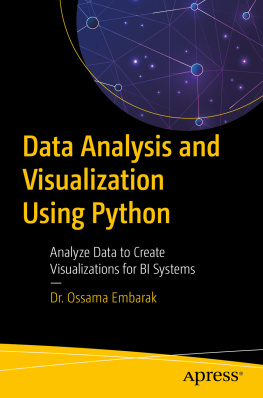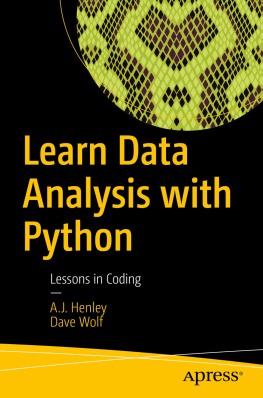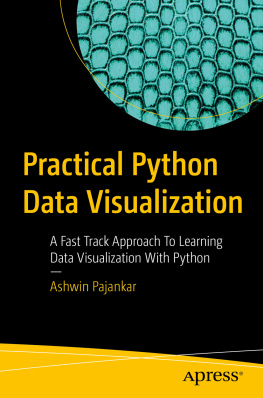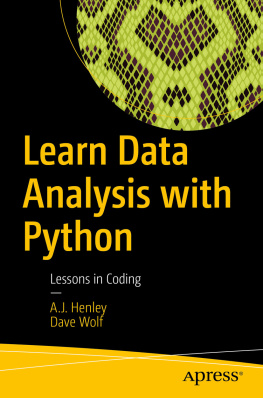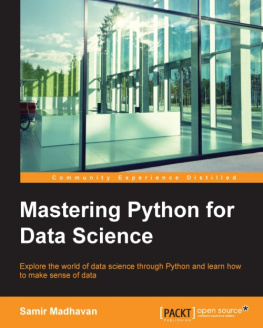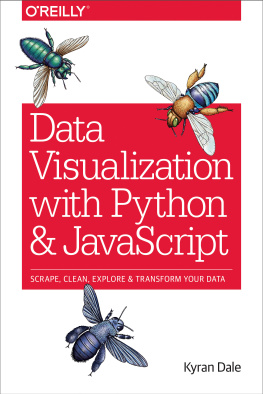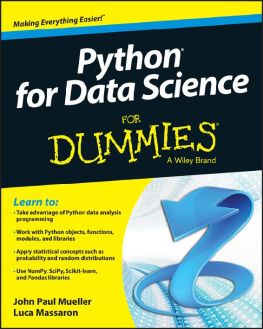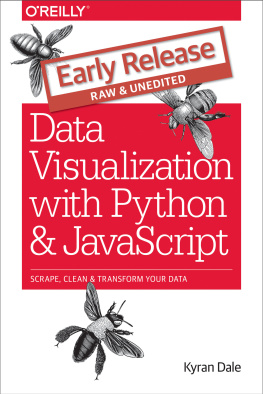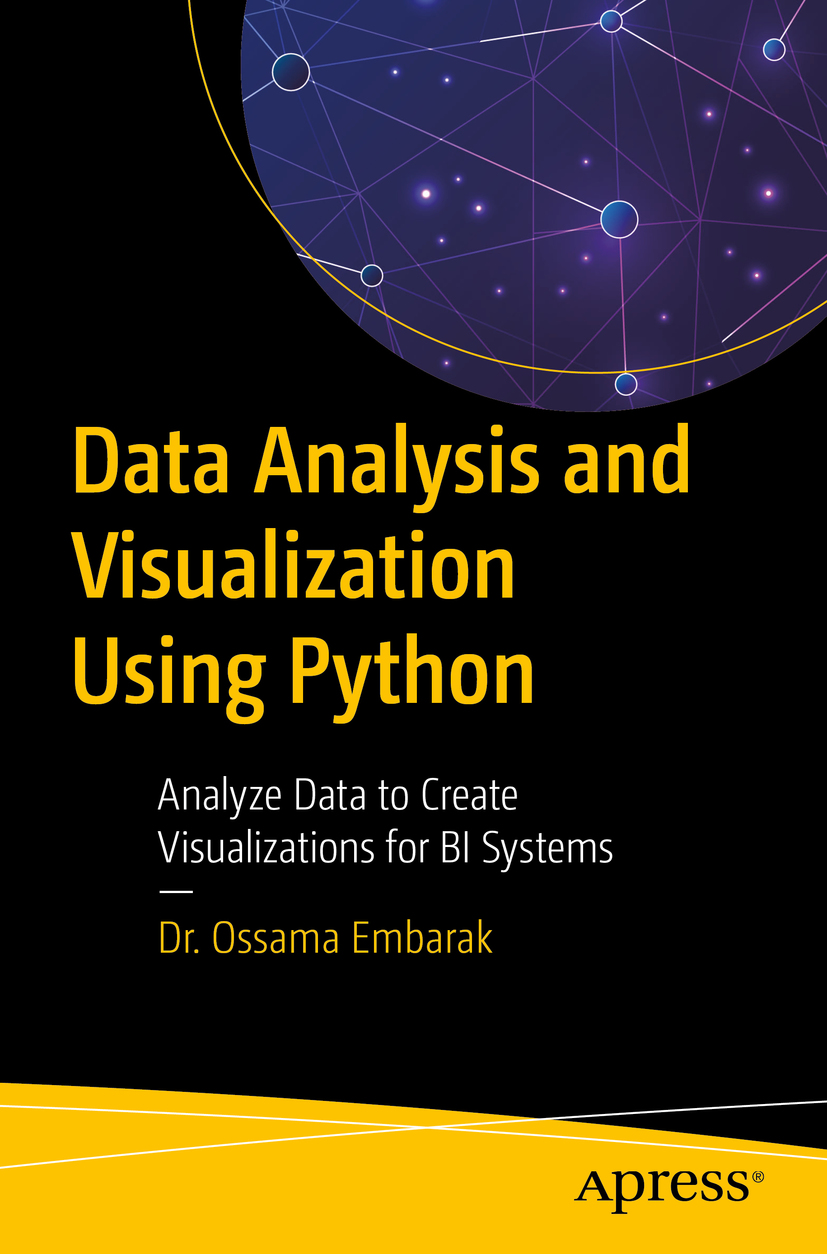Dr. Ossama Embarak
Higher Colleges of Technology, Abu Dhabi, United Arab Emirates
Any source code or other supplementary material referenced by the author in this book is available to readers on GitHub via the books product page, located at www.apress.com/978-1-4842-4108-0 . For more detailed information, please visit www.apress.com/source-code .
ISBN 978-1-4842-4108-0 e-ISBN 978-1-4842-4109-7
https://doi.org/10.1007/978-1-4842-4109-7
Library of Congress Control Number: 2018964118
Dr. Ossama Embarak 2018
Standard Apress
Trademarked names, logos, and images may appear in this book. Rather than use a trademark symbol with every occurrence of a trademarked name, logo, or image we use the names, logos, and images only in an editorial fashion and to the benefit of the trademark owner, with no intention of infringement of the trademark. The use in this publication of trade names, trademarks, service marks, and similar terms, even if they are not identified as such, is not to be taken as an expression of opinion as to whether or not they are subject to proprietary rights.
While the advice and information in this book are believed to be true and accurate at the date of publication, neither the authors nor the editors nor the publisher can accept any legal responsibility for any errors or omissions that may be made. The publisher makes no warranty, express or implied, with respect to the material contained herein.
Distributed to the book trade worldwide by Springer Science+Business Media New York, 233 Spring Street, 6th Floor, New York, NY 10013. Phone 1-800-SPRINGER, fax (201) 348-4505, e-mail orders-ny@springer-sbm.com, or visit www.springeronline.com. Apress Media, LLC is a California LLC and the sole member (owner) is Springer Science + Business Media Finance Inc (SSBM Finance Inc). SSBM Finance Inc is a Delaware corporation.
Introduction
This book looks at Python from a data science point of view and teaches the reader proven techniques of data visualization that are used to make critical business decisions. Starting with an introduction to data science using Python, the book then covers the Python environment and gets you acquainted with editors like Jupyter Notebooks and the Spyder IDE. After going through a primer on Python programming, you will grasp the fundamental Python programming techniques used in data science. Moving on to data visualization, you will learn how it caters to modern business needs and is key to decision-making. You will also take a look at some popular data visualization libraries in Python. Shifting focus to collecting data, you will learn about the various aspects of data collections from a data science perspective and also take a look at Pythons data collection structures. You will then learn about file I/O processing and regular expressions in Python, followed by techniques to gather and clean data. Moving on to exploring and analyzing data, you will look at the various data structures in Python. Then, you will take a deep dive into data visualization techniques, going through a number of plotting systems in Python. In conclusion, you will go through two detailed case studies, where youll get a chance to revisit the concepts youve grasped so far.
This book is for people who want to learn Python for the data science field in order to become data scientists. No specific programming prerequisites are required besides having basic programming knowledge.
Specifically, the following list highlights what is covered in the book:
Chapter introduces the main concepts of data science and its life cycle. It also demonstrates the importance of Python programming and its main libraries for data science processing. You will learn how different Python data structures are used in data science applications. You will learn how to implement an abstract series and a data frame as a main Python data structure. You will learn how to apply basic Python programming techniques for data cleaning and manipulation. You will learn how to run the basic inferential statistical analyses. In addition, exercises with model answers are given for practicing real-life scenarios.
Chapter demonstrates how to implement data visualization in modern business. You will learn how to recognize the role of data visualization in decision-making and how to load and use important Python libraries for data visualization. In addition, exercises with model answers are given for practicing real-life scenarios.
Chapter illustrates data collection structures in Python and their implementations. You will learn how to identify different forms of collection in Python. You will learn how to create lists and how to manipulate list content. You will learn about the purpose of creating a dictionary as a data container and its manipulations. You will learn how to maintain data in a tuple form and what the differences are between tuple structures and dictionary structures, as well as the basic tuples operations. You will learn how to create a series from other data collection forms. You will learn how to create a data frame from different data collection structures and from another data frame. You will learn how to create a panel as a 3D data collection from a series or data frame. In addition, exercises with model answers are given for practicing real-life scenarios.
Chapter shows how to read and send data to users, read and pull data stored in historical files, and open files for reading, writing, or for both. You will learn how to access file attributes and manipulate sessions. You will learn how to read data from users and apply casting. You will learn how to apply regular expressions to extract data, use regular expression alternatives, and use anchors and repetition expressions for data extractions as well. In addition, exercises with model answers are given for practicing real-life scenarios.
Chapter covers data gathering and cleaning to have reliable data for analysis. You will learn how to apply data cleaning techniques to handle missing values. You will learn how to read CSV data format offline or pull it directly from online clouds. You will learn how to merge and integrate data from different sources. You will learn how to read and extract data from the JSON, HTML, and XML formats. In addition, exercises with model answers are given for practicing real-life scenarios.
Chapter shows how to use Python scripts to explore and analyze data in different collection structures. You will learn how to implement Python techniques to explore and analyze a series of data, create a series, access data from a series with a position, and apply statistical methods on a series. You will learn how to explore and analyze data in a data frame, create a data frame, and update and access data in a data frame structure. You will learn how to manipulate data in a data frame such as including columns, selecting rows, adding, or deleting data, and applying statistical operations on a data frame. You will learn how to apply statistical methods on a panel data structure to explore and analyze stored data. You will learn how to statistically analyze grouped data, iterate through groups, and apply aggregations, transformations, and filtration techniques. In addition, exercises with model answers are given for practicing real-life scenarios.

